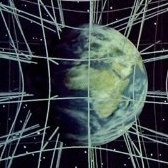Leaderboard
Popular Content
Showing content with the highest reputation on 10/12/20 in all areas
-
Time to run free and ask, what is your favourite quote from a philosopher2 points
-
“Science” did not decide to deploy these devices. I think you’re overthinking the issue. Utopia is impossible because what people think is utopia will vary across a population. You can’t optimize a system with so many variables, since improving some aspect of society will invariably be at the expense of some other aspect. Just as you’ve pointed out that devices pollute, so despite any advantage such an invention might bring, there’s usually a negative associated with it. It becomes a matter of whether the benefits outweigh the negatives, rather than becoming a utopia.2 points
-
@psyclones: I've been reading where vortex breakers are used to improve roof drainage, but don't see any examples where a screw inside the pipe is used or know if a screw would work. https://en.wikipedia.org/wiki/Vortex_breaker http://www.roofingmagazine.com/retrofit-roof-drains-feature-integrated-vortex-breaker/2 points
-
We are taught that calculus is all about "instantaneous changes" between 2 points, x and delta x in respect to time with x = 0 and delta x =1 For example, when we set x = 0, "are we "manipulating" time , ie stopping at a certain location " going a certain distance" as to derive the instantaneous change at that point " location" in time? If that's the case for our x = 0 "reference point" then what's the point of calculus and its "undefined location?" Another example, if x = 0 and delta x = 1, " what's the point of coordinate vectors?" example x = 3 y = 9?? Another good example, if Cartesian Space references 0 in the coordinate system -2, -3, -1, 0, 1 , 2 ,3 then what's the point of Cartesian Space itself? Take note: I'm using 0 and 1 here as interchangeable. Thanks in advance!1 point
-
You are the universe expressing itself as a human for a little while. ~ Eckhart Tolle1 point
-
1 point
-
1 point
-
A reason might be that the opening post can be interpreted as a request for medical advice. Please check the forum rules.1 point
-
Don’t see why that matters. Inert in this context means it doesn’t interact, but interaction requires something to interact with, so saying if left to itself/themselves is kinda pointless. That was the main issue. Magnets exert forces and torques. They will induce currents. They interact, so they are not inert. That’s the other issue. IOW, Charles was doubly wrong. I don’t see the benefit of splitting hairs at this point, seeing as this is not the question before us.1 point
-
1 point
-
The thread's question needs interpretation, and I might be interpreting it differently than others. I think that what you're asking is how much mass you would need to make everything in the universe gravitationally bound to it, despite the current rate of expansion. If I'm thinking about it right, any constant rate of expansion will result in a constant-size cosmic horizon, beyond which it is impossible for matter to be gravitationally bound across that distance. The reason is that the matter would have to be falling in faster than the speed of light, to overcome the expansion of space between it and the mass. The horizon is determined by expansion alone, so making a more massive BH won't help... except... If you had matter right on the cosmic horizon, you'd need to basically have it falling in at a speed of c to overcome expansion. That would imply a BH with an event horizon at the same radius as the cosmic horizon??? (assuming Schwarzschild BH) But then, if you had a BH even close to that size, matter on the cosmic horizon would be a lot closer to it than if it were a point mass, so wouldn't it fall in anyway? Or does it work out that the gravitational influence of a BH is still the same as if it were a point mass? This seems really weird, because even if we completely ignore expansion for a moment, wouldn't this mean that the gravitational influence of a BH is roughly proportional to 1/r^2, while the mass is proportional to 1/r, no matter how big it is? That seems to imply that if you could have a BH of unlimited mass, you could make it so that the Schwarzschild radius is so large that an object outside it is so extremely far away from the center of the BH that the gravitational acceleration is small, even if it is near the horizon. Am I thinking about this correctly? How would an infalling observer describe the BH? It seems that the event horizon (a lightlike surface) would still pass by it at the speed of light, despite minimal acceleration. Meanwhile it seems like another observer, hovering farther away, outside the horizon, could easily avoid falling in, and see that same event horizon as stationary. Where's the error in my thinking? Back to expansion, would it even make sense to talk about a constant rate of expansion of spacetime, in a volume that is entirely occupied by a massive BH? The BH curves the spacetime so extremely that the volume inside the horizon is not a part of the same spacetime outside??? Does curved spacetime expand the same as flat spacetime? Would a volume containing a large BH expand the same as a volume of empty space?1 point
-
The outcome of the experiment does not depend on the particulars of the detector apparatus, or even on the layout of the setup itself; it depends only on what information is accessible to the experimenter. So long as the only accessible information is position and time of each individual detection event at the receiver device, a large ensemble of such events will always form an interference pattern. On the other hand, if any form of which-path information is available from the setup, then there will be no interference pattern.1 point
-
You should start your own thread if you wish to explore this off-topic topic1 point
-
From any given distance to a black hole the 'gravitational pull' does not change at all as a BH gets smaller. If our sun were to suddenly become a BH there would be no change to its gravitational pull on us. The gravity gets stronger when you move closer to a center of mass. Imagine the strength of gravity on the surface of the sun. That is the strongest you can feel the sun's gravity. But if the sun turned into a BH, you could get close to its center of mass since its 'surface' is now closer to its center of mass. THAT is where you would feel a stronger gravitational pull.1 point
-
First, let me say that "simply being creative" is very much more valuable than you make it seem. But, aside from that, There are undoubtedly many novel ideas that a hobby inventor might discover and patent thereby becoming rich and/or famous. The difficulty is that the things that have value depend on what is going on in society and the current state of both technology and the needs of society. To successfully invent you need to be attuned to the needs of society and where those needs are either not being fulfilled or may not even have been yet recognized. A good example is the invention of the tiny plastic clips that are used to close plastic bags (such as in the bread section of the market, at least in the US). Invention has a great deal to do with recognizing needs and being at the right place at the right time.1 point
-
The distance between the ships does contract in the S frame, but since the proper distance between the ships increases, it effectively stays the same in the S frame. So say the ships (separated by 1 light hour) accelerate identically (same proper acceleration, commencing simultaneously in S) to 0.6c. In the new inertial frame (T) where they both eventually come to rest, the ships are now 1.25 light hours apart (proper distance), which is length contracted to 1 light hours in frame S. The 1 light hour string is length contracted to 0.8 LH in S, which isn't enough to connect them. It is fully 1 LH in T, which also isn't enough to connect them.1 point














